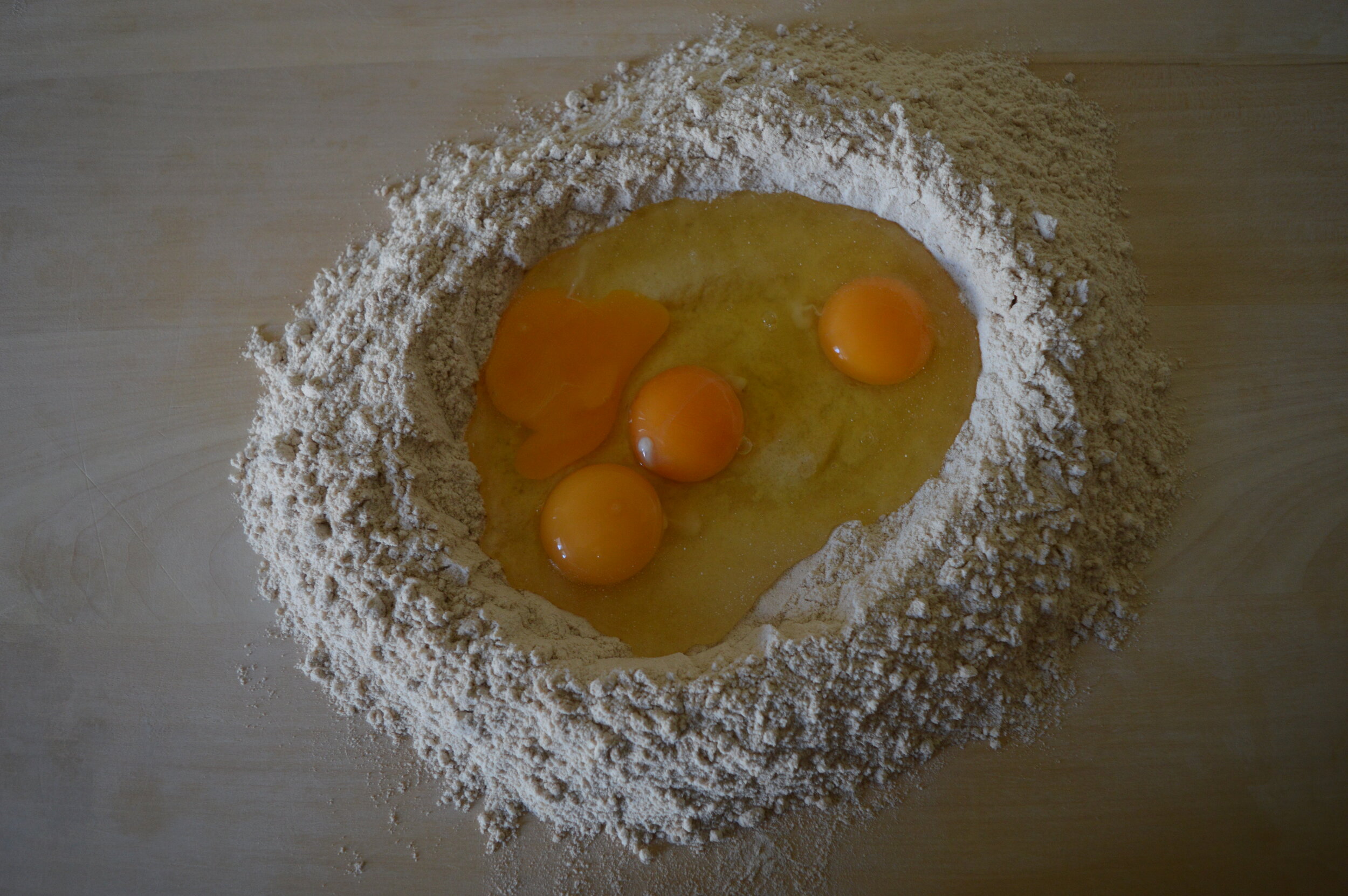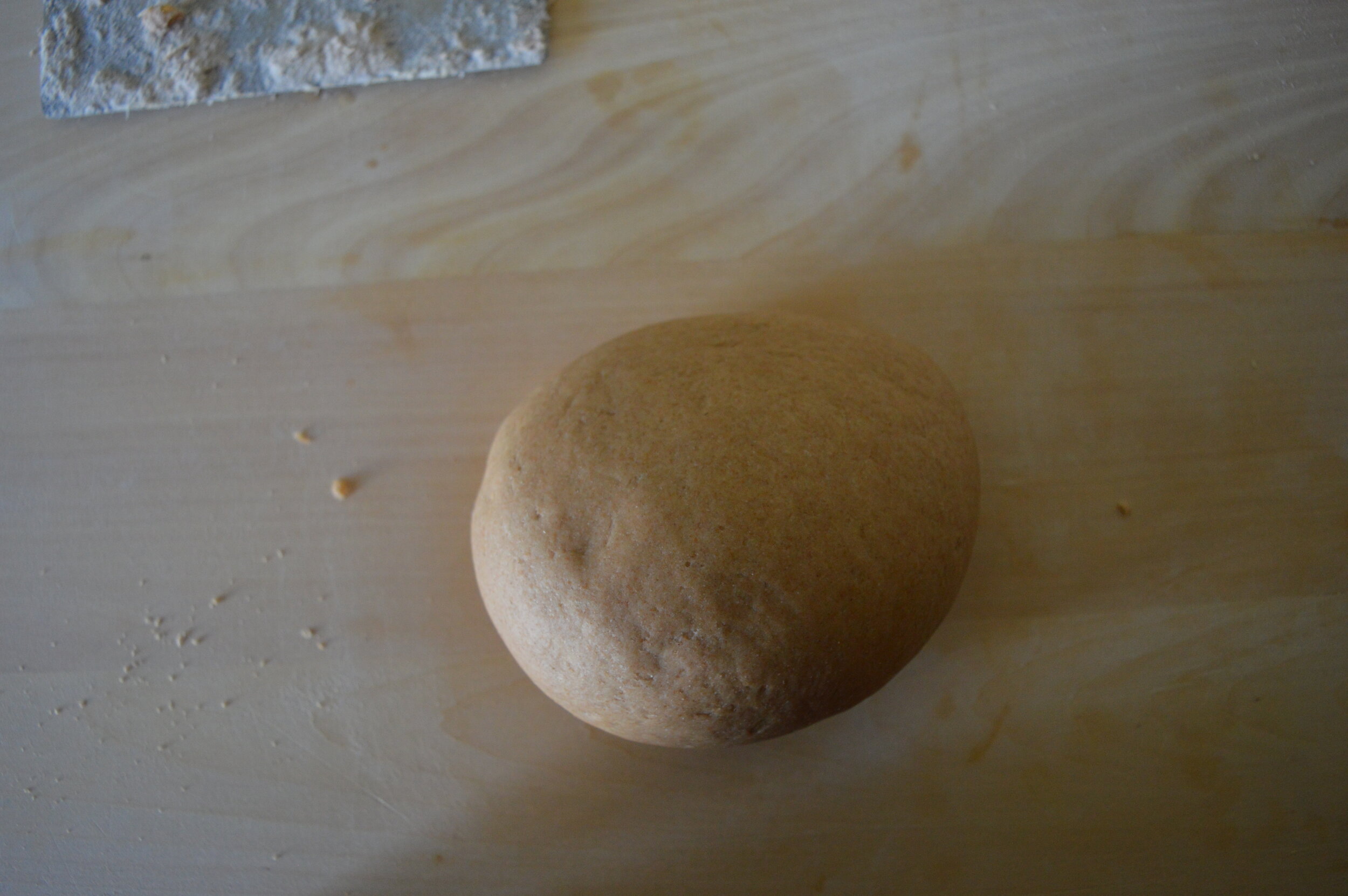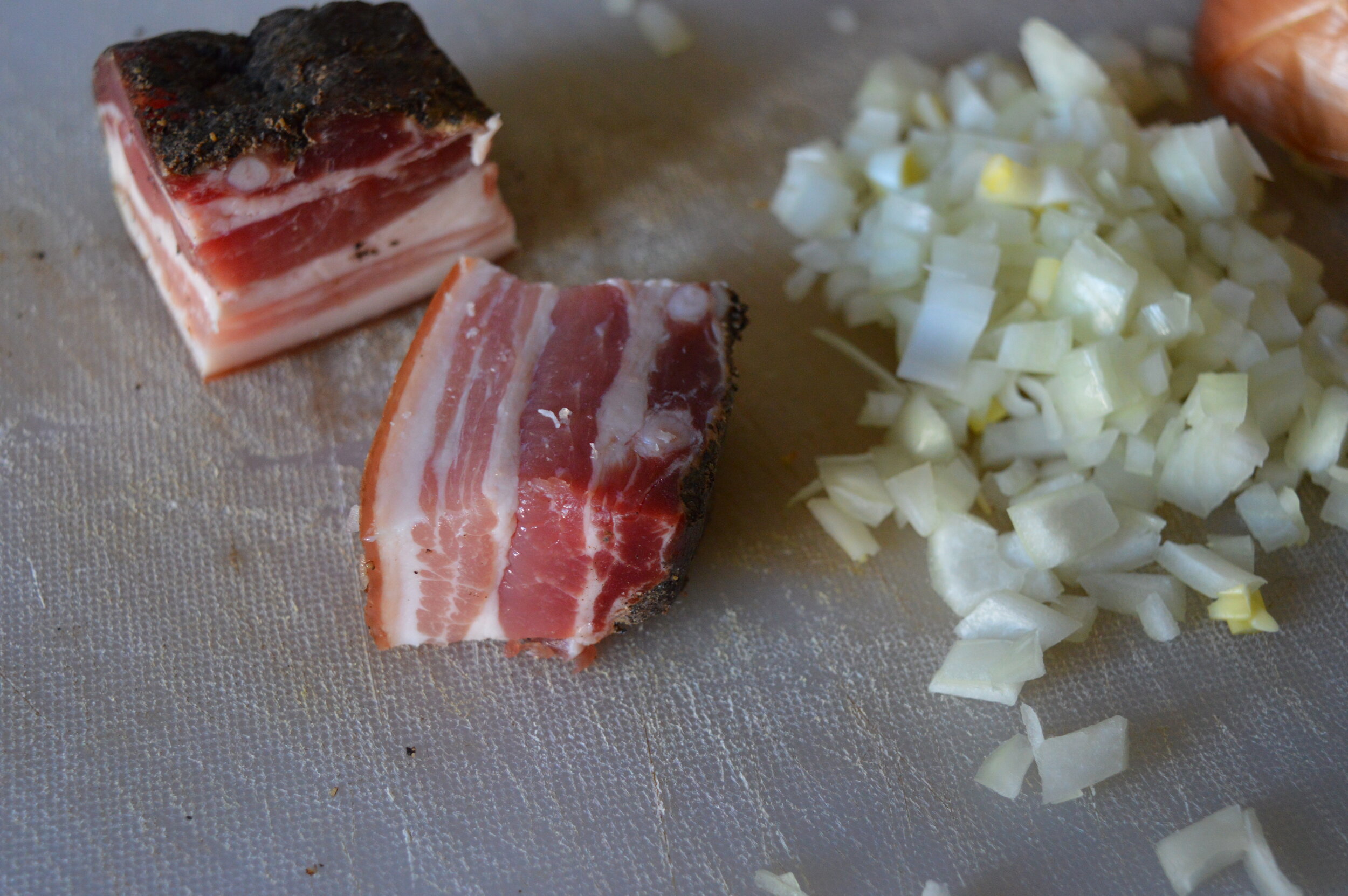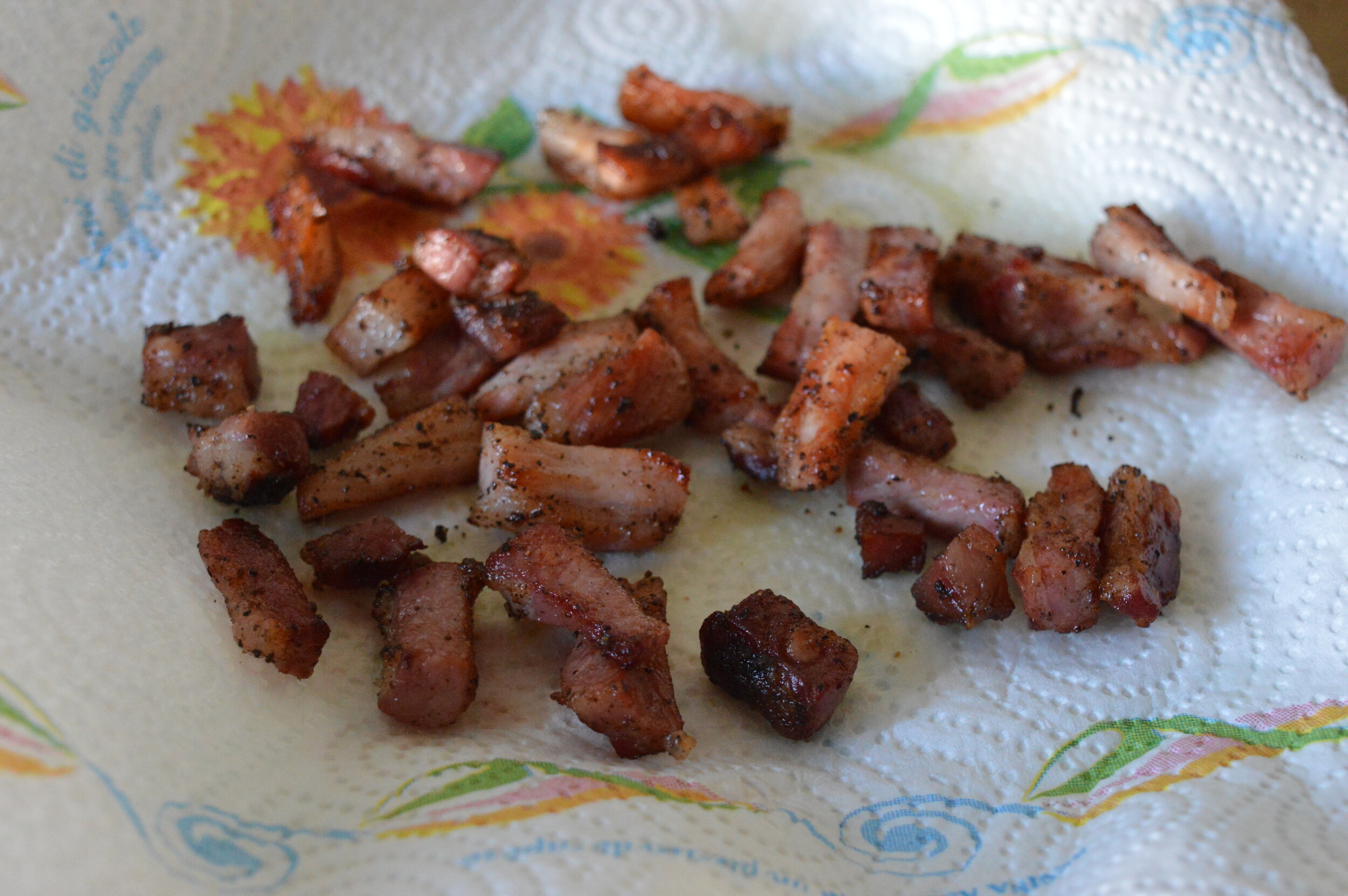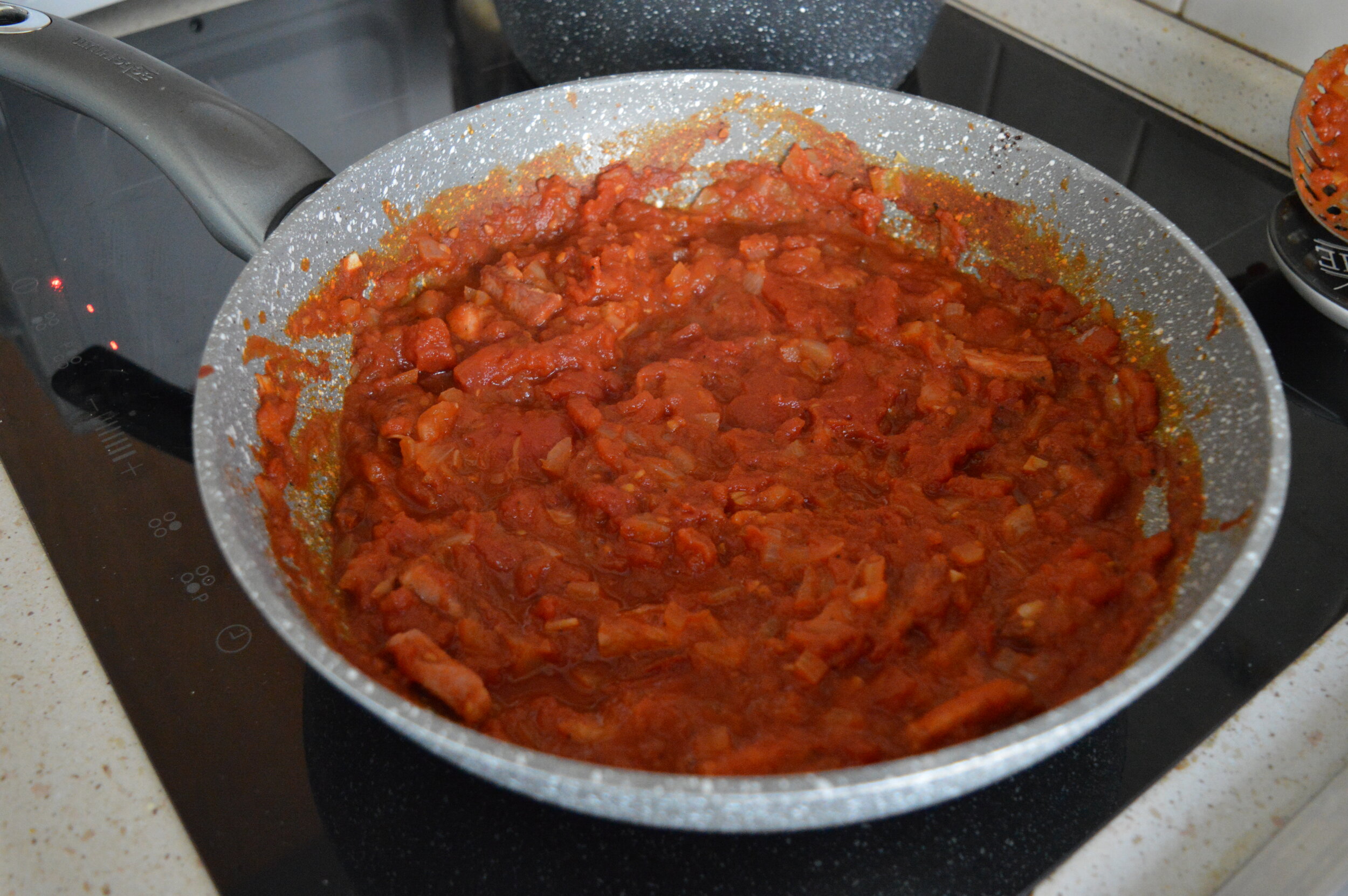Pasta Series #15: Tagliatelle al farro con pancetta
I’m back with the latest round of the blog’s Pasta Series, i.e my monthly post detailing the latest homemade pasta I’ve attempted and (hopefully) conquered (!!!) This month's recipe comes from the Pasta Grannies Cookbook.
If you're not familiar: Pasta Grannies is the brainchild of the talented Vicky Bennison, a Brit who has made it her mission to document Italian nonne (grannies) from all over Italy who make fresh pasta, thus both preserving and promoting the tradition of pasta making. The project shows that the art of handmade pasta -- something that doesn't exactly fit in with the desire for the speed, efficiency, and instant gratification that characterizes today's lifestyle -- hasn’t yet been lost, as evidenced by its 480k followers on Instagram, 719k followers on YouTube, and James Beard award winning book, “The Pasta Grannies Cookbook”. The book is a beautiful collection of pasta recipes — everything from northern pizzoccheri to southern culurgiones — and the stories of the women behind them. Today’s recipe for tagliolini al farro con pancetta (page 179 of the PG Cookbook) comes from Doriana, who runs an agriturismo in Umbria where she produces her own pancetta .
Recap: we’ve already covered egg pasta in this Series, plus pasta made with semola, gnocchi in all of its various forms, and quick and easy spatzle. Doriana’s recipe is a variation on the building block that is egg pasta; the same method detailed in previous posts is used here, the only exception being that the usual plain flour is mixed with farina di farro, or farro flour. Farro is an ancient grain that was a staple in the ancient Roman diet; it is highly nutritious, rich in fiber, magnesium and vitamins A, B, C and E. It can be used in soups, stews, salads, or my favorite recipe here; it is also delicious when used in the place of rice in risotto (farrotto). The grain can also be ground and made in to flour, which can be used for making bread and, for the purposes of today’s post, pasta.
So! Thanks to our ancient-grain-turned-flour, Doriana’s recipe makes for pasta that boasts a nuttier, more complex flavor than your typical egg pasta; it feels more wholesome, substantial, important. Her sauce is reminiscent of that of my beloved amatriciana — pecorino, pork, tomatoes, chili! —.or rather a heavenly mix of salty, savory, saucy, and spicy. When tossed with silky ribbons of fresh pasta, it is a delight to eat (watch as your fork prima-ballerina-twirls and gathers your pasta one satisfying forkful at a time, traveling from plate to happy stomach!) As I write this, it occurs to me that farro pasta dough here would also be lovely used in lasagne, or for ravioli. Mind buzzing now (ravioli filling brainstorming has commenced!) but overall verdict: another beautiful recipe from one of my top cookbooks.
A couple of notes: As usual, use a kitchen scale when making pasta; its the most precise and easiest way, much better than the American cups and tablespoons. I opted for wider tagliatelle instead of the finer tagliolini that Doriana opts for. If you are using a pasta machine here (as I did) you will have an attachment that provides both options. If you prefer to roll your pasta out with a rolling pin and use a knife to cut your pasta as Doriana does, go right ahead. I doubled the amount of tomatoes that the sauce calls for here to be able to sauce the pasta more generously. I also cooked the pancetta and then stirred it in at the end to keep it nice and crisp. If you to make the sauce meat free, just leave out the pancetta for a spicy sauce. I found that the recipes make a good amount of pasta, probably enough to serve 5 or even 6, but see how it goes for you. Finally, I found that farro flour is also delicious in baked goods, too, especially these cookies.
Want to know what the other recipes are in the blog’s Pasta Series? Click here!
TAGLIATELLE DI FARRO CON PANCETTA
Recipe from the Pasta Grannies Cookbook by Vicky Bennison. Serves 4-6.
Ingredients for the pasta:
300 grams (2 ½ cups) farro flour
100 grams (3 ½ ounces) 00 or plain flour
4 medium eggs (about 205 grams)
Ingredients for the sauce:
2 tablespoons olive oil
150 grams (about 5 ounces) pancetta, cut into thick matchsticks
1 onion, diced
2 dry chilis
120 mL (1/2 cup) white wine
800 grams (28 oz) can whole peeled tomatoes
25 grams (about 1 ounce) grated Pecorino Romano cheese, plus extra for serving
Salt to taste
Tools needed: a bench scraper and a pasta board or wooden surface to knead your dough on.
Directions:
1. In a large bowl, whisk together both the plain and farro flours until well combined and pour them out on to your pasta board (or wooden surface — even a large cutting board will do). Make a well in the flour and pour in the eggs. Gradually, with the aid of a fork, beat the eggs, and then work in the flour from around the edges a little at a time until you get a shaggy mass. Use your bench cutter to cut the egg in to the flour scooping and gathering the flour as you go. Squeeze it together until a dough starts to form.
Alternatively: you can use a food processor to make your dough (though I much prefer the above-mentioned method!) Blend your eggs in the food processor first until they are smooth, then add the flours and process until the dough comes together in a shaggy mass (this might take a minute or two). Turn your dough out onto your work surface, squeeze it together a little if needed to bring it together, and then move on to the kneading stage.
2. Start to knead your dough it until it is shiny and smooth, at least 10 minutes, adding a little water if it seems dry. For a short explanation on how to knead the dough via my friend Carla, click right here!
3. When your dough is nice and shiny and smooth, wrap it in plastic wrap to rest for at least 30 minutes. Note that air is the enemy of fresh pasta — you don’t want your pasta to dry it out, so make sure it is wrapped up well.
4. While your pasta is resting, make your sauce! In a sauce pan over medium heat, fry the pancetta in a little olive oil onion until crisp and brown. Remove from the pan and place on a paper towel lined plate (to get rid of any excess grease). Add the onion and chili to the pan and cook until the onion is soft. Deglaze the pan with the wine and keep frying while the alcohol evaporates. Once the steam from the pan ceases to smell winey, add the tomatoes, and give everything a good stir. Season with a pinch of salt. Let the sauce bubble away while you work on your pasta.
4. Once the dough has rested, you can start to roll it out in to sheets which will then be cut in to tagliatelle (or tagliolini, if you prefer). Set up your pasta machine, attaching the roller handle and securing it to a work table. Set the rollers to the widest setting (0 in my case). Cut the dough in to four or so equal pieces. You will work with one piece at a time; take a piece of dough and keep the others covered.
5. Flatten the piece of dough out so that it will go easily through the pasta machine. Roll the dough through, fold the strip of dough like and envelope and roll it again. If the dough feels too sticky, dust it with a little flour. Repeat this folding and rolling process about 5 times.
6. Now that you have kneaded your dough in this initial step, start to roll it out. Set the machine one notch down (from 0 to 1, in my case) and pass the dough ONCE through the rollers (no need to fold it anymore). Continue, rolling the dough once through each successive setting, until you reach 6. Feel free to cut your dough in to more manageable sheets as you go — I usually need to do this by about 4 or 5 — as they will get quite long.
7. Using the fettuccine/tagliatelle or tagliolini attachment of your pasta machine, cut each sheet of rolled-out-to-6 pasta into ribbons, dusting well with flour before you do so. Once cut, dust your pasta ribbons with a little more flour and form nests. Repeat steps 6-7 with the remaining 3 pieces of dough.
8. Bring a pan of salted water to a boil, and toss in your pasta — it will cook quickly, in about two minutes. Next, remove the chili from your sauce and add the pancetta back in, stirring well. Scoop the pasta out of the pan with a slotted spoon or sieve and ladle it into the saucepan. Add in the Pecorino and toss everything together. Plate immediately, sprinkling with more cheese if you wish.

